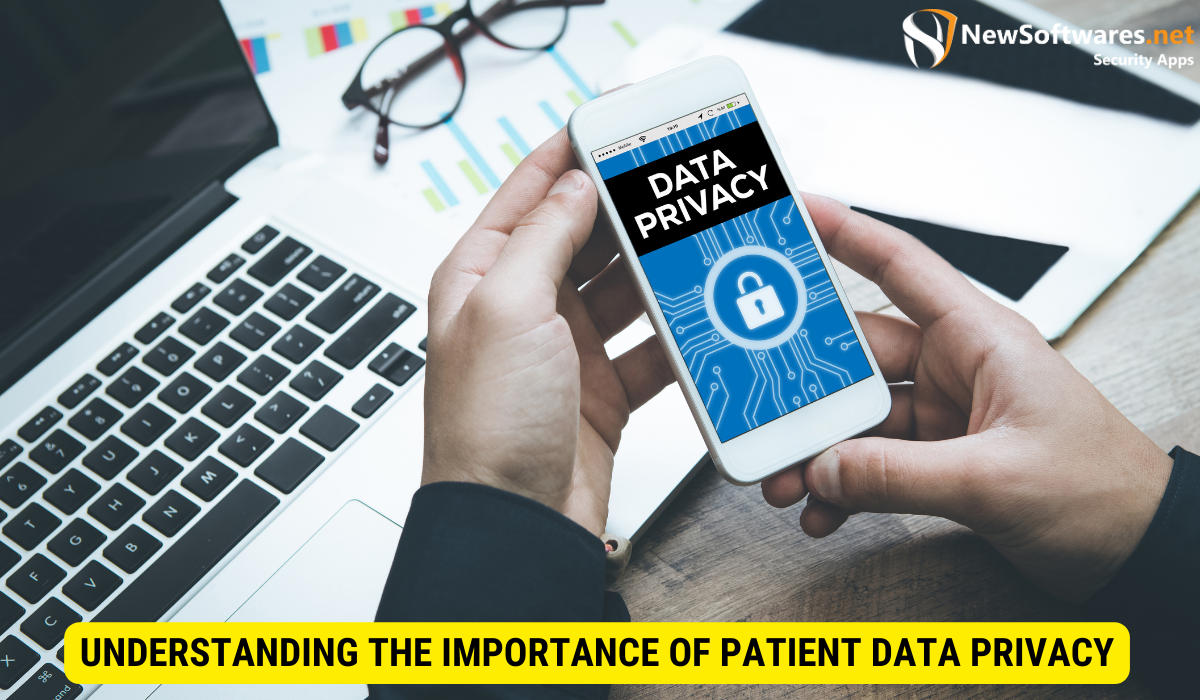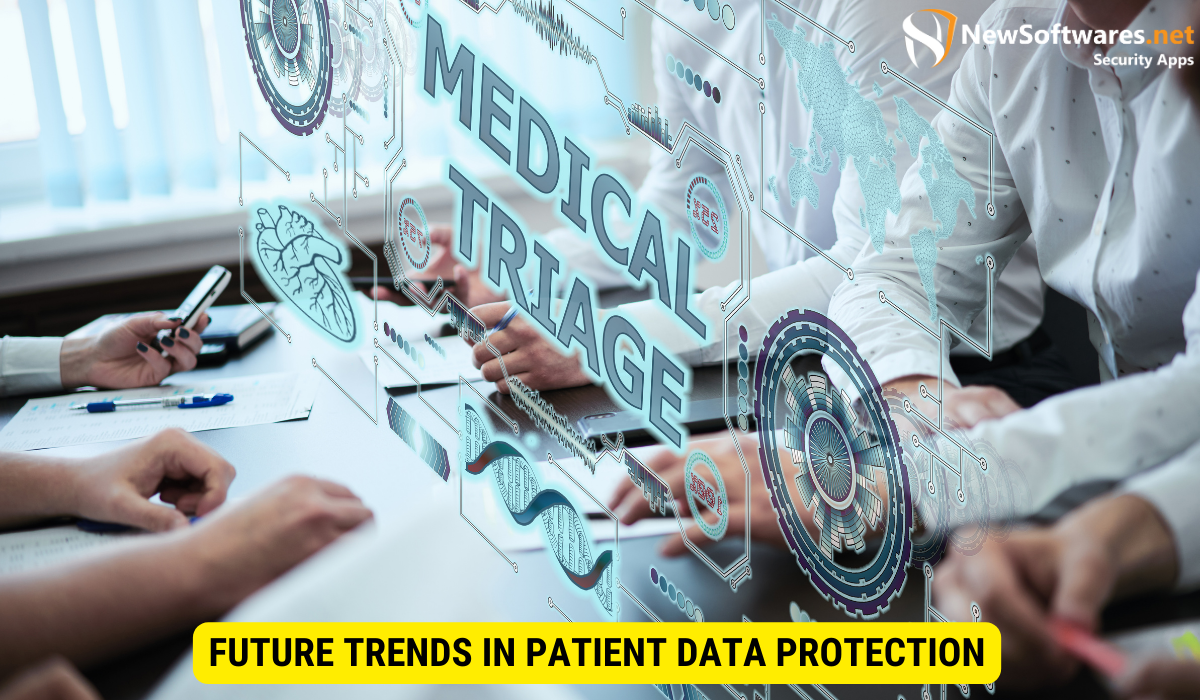Safeguarding patient data in healthcare is critical for trust and compliance. HIPAA sets standards for data protection, including the Privacy Rule and Security Rule. Data breaches have severe consequences, making robust security measures, staff training, encryption, and blockchain crucial for safeguarding data. Challenges include limited resources and cybersecurity risks. Emerging trends like AI and legislation will shape the future of patient data protection.
In the contemporary digital era, safeguarding privacy and security has become critical across multiple sectors, particularly healthcare. As the utilization of technology for the storage and administration of delicate patient information continues to rise, enterprises are confronted with the task of upholding the authenticity and secrecy of such data. This article delves into the significance of preserving patient data privacy and investigates the methods and technological solutions entities deploy to safeguard patient data. Additionally, we will examine the obstacles encountered and future developments in patient data protection.
Understanding the Importance of Patient Data Privacy

Patient data privacy is a fundamental aspect of healthcare that must be safeguarded to maintain patient trust and compliance with regulations. One of the key frameworks that help protect patient data is the Health Insurance Portability and Accountability Act (HIPAA).
In the realm of healthcare, the safeguarding of patient data’s privacy and security stands as a paramount concern. Patients place their faith in healthcare providers to handle their personal and sensitive information, which includes their medical history, test results, and insurance particulars. Healthcare organizations must uphold the sanctity and security of this information to uphold patient confidentiality and foster trust.
The Health Insurance Portability and Accountability Act (HIPAA), enacted in 1996, plays a pivotal role in ensuring the privacy of patient data. HIPAA establishes rigorous standards for safeguarding sensitive patient information by setting organizational guidelines. This legislation applies to variouapplies to various These entities are obligated to institute protective measures that guarantee the privacy and security of patient data.
The Role of HIPAA in Patient Data Protection
HIPAA’s main objective is safeguarding patient data and ensuring its confidentiality, integrity, and availability. Organizations must implement safeguards to protect patient information from unauthorized access, use, and disclosure.
One of the fundamental aspects of HIPAA is the Privacy Rule, which sets forth the guidelines for safeguarding individuals’ medical records and personal health information. The Privacy Rule gives patients authority over health-related data and restricts how healthcare providers may utilize and disclose such information.
Moreover, within the framework of HIPAA exists the Security Rule, which emphasizes the technical and physical measures that organizations are obligated to put in place to safeguard electronic patient data. This encompasses access controls, encryption, and routine security evaluations to ensure patient information’s confidentiality and integrity.
The Consequences of Data Breaches in Healthcare
While it is essential to protect patient data, the consequences of data breaches in healthcare can be severe. Data breaches can ensue for various reasons, including cyberattacks, employee negligence, or inadequate security measures.
When a data breach occurs, it can have significant implications for both patients and healthcare organizations. Patients may suffer harm, such as identity theft or unauthorized disclosure of sensitive medical information. This can lead to emotional distress and loss of trust in the healthcare system.
Data breaches pose significant risks to healthcare organizations, including financial penalties, damage to their reputation, and legal liabilities. HIPAA imposes stringent consequences for failing to comply with its regulations, resulting in fines ranging from thousands to millions of dollars, depending on the severity of the breach. Furthermore, healthcare organizations may face legal actions brought by individuals affected by the breach who pursue compensation for the harm they have suffered.
As a result, it is imperative for organizations to proactively address these risks and take steps to prevent and mitigate data breaches. This entails implementing robust security measures, regular risk assessments, comprehensive training programs for employees on data privacy and security, and developing incident response plans to swiftly and efficiently address breaches when they occur.
By prioritizing patient data privacy and taking necessary precautions, healthcare organizations can maintain patient trust, comply with regulations, and ensure the confidentiality and security of sensitive patient information.
Strategies for Protecting Patient Data
Organizations must establish strong security protocols to protect patient data and ensure that their employees are thoroughly trained in data privacy principles. Safeguarding patient data is of utmost importance, given its significant value. Due to the sensitive nature of the information it handles, the healthcare sector is a prime target for cybercriminals. Consequently, organizations must exceed standard practices to develop all-encompassing strategies that comply with regulations and effectively counter emerging threats.
Implementing Robust Security Measures
Organizations can employ various security measures to protect patient data. These measures include implementing firewalls, using intrusion detection systems, regularly updating software and systems, and conducting vulnerability assessments. Firewalls act as a wall between the internal network and external threats, preventing unauthorized access to patient data. Intrusion detection systems monitor network traffic and identify suspicious activity, enabling organizations to act immediately.
Regular software and system updates are crucial in maintaining a secure environment. Software merchants often release patches and updates to address vulnerabilities that hackers could exploit. By promptly applying these updates, organizations can stay one step ahead of potential threats.
Conducting vulnerability assessments is another essential practice. These assessments involve identifying and evaluating weaknesses in the organization’s infrastructure, applications, and processes. By proactively identifying vulnerabilities, organizations can take the necessary steps to mitigate risks and strengthen their security posture.
Additionally, encrypted communication channels and secure authentication methods can provide an extra layer of protection. Encryption ensures that patient data remains unreadable to unauthorized individuals, even if intercepted. Secure authentication methods, such as two-factor authentication, add an extra layer of verification, making it harder for hackers to access sensitive information.
Training Staff on Data Privacy Principles
Human error is one of the leading causes of data breaches. Organizations must invest in training their staff on data privacy principles and the importance of handling patient data securely. Staff members must be aware of their roles and responsibilities in protecting patient information and should be trained to identify and report any potential security incidents.
Training sessions should cover password hygiene, phishing awareness, and social engineering tactics. By educating employees about these threats, organizations can authorize them to make informed decisions and avoid falling victim to cyberattacks.
Furthermore, organizations should establish clear policies and procedures for handling patient data. Staff members should be trained on the proper protocols for accessing, storing, and transmitting patient information. Regular refresher courses and ongoing education are essential to keep staff members updated with the latest security practices.
In conclusion, safeguarding patient data necessitates a multifaceted strategy. Entities should deploy robust security measures, including firewalls and intrusion detection systems, alongside investing in staff training regarding data privacy principles. By embracing these tactics, organizations can establish a secure environment that shields patient data from potential threats.
The Role of Technology in Patient Data Protection
Technology is vital in protecting patient data, and organizations increasingly rely on advanced solutions to ensure data security and privacy.
Utilizing Encryption for Data Security
Encryption is a potent instrument capable of safeguarding patient data through its conversion into an unintelligible format. Encrypting sensitive information makes data impervious and useless, even in cases of unauthorized access. Organizations must incorporate encryption mechanisms, both for data at rest and during transmission, to bolster the security of patient information.
The Impact of Blockchain on Patient Data Privacy
Blockchain technology offers exciting possibilities for improving patient data privacy. Its decentralized nature and cryptographic encryption make it difficult for hackers to tamper with or access patient data. Furthermore, the transparency of blockchain allows patients to have more control over their data, allowing them to provide consent and revoke access as needed.
Privacy and Security Challenges in Healthcare
Despite the efforts made by organizations to protect patient data, there are still several challenges they face in ensuring privacy and security.
Overcoming Obstacles in Data Protection
Organizations must navigate challenges such as limited resources, interoperability issues, and the complexity of healthcare systems. Implementing robust security measures requires significant investments in technology, training, and ongoing maintenance. Collaboration among stakeholders is essential to address these obstacles effectively.
Addressing the Risks of Cyber Attacks
Cybersecurity threats present a substantial risk to the security of patient data. Incidents such as ransomware attacks and phishing attempts, among other malicious activities, can jeopardize sensitive information and disrupt the smooth functioning of healthcare operations. To combat these evolving threats effectively, healthcare organizations must maintain constant vigilance, proactively develop and deploy cybersecurity strategies, and consistently update their defensive measures.
Future Trends in Patient Data Protection

As technology advances, several trends in patient data protection are emerging.
The Potential of Artificial Intelligence in Data Security
Artificial Intelligence (AI) holds great promise for enhancing patient data security. AI algorithms can detect patterns and anomalies in data, helping organizations identify potential security breaches faster and more accurately. AI-powered solutions can also automate repetitive tasks, allowing staff to focus on more complex security challenges.
The Role of Legislation in Shaping Data Privacy Practices
Legislation and regulations will play a crucial role in shaping data privacy practices. Governments increasingly enact laws to protect patient data and hold organizations accountable for data breaches. Organizations must stay abreast of these legal requirements and align their policies and procedures accordingly to ensure compliance.
Key Takeaways
- Protecting patient data is crucial to maintaining trust and compliance in healthcare organizations.
- HIPAA sets the standards for protecting patient data through administrative, physical, and technical safeguards.
- Data breaches can have unembellished consequences, including financial penalties and reputational damage.
- Robust security measures, staff training, encryption, and blockchain technology are essential for safeguarding patient data.
- Challenges in data protection include limited resources and addressing the risks of cyber attacks.
- Emerging trends, such as AI and legislation, will shape the future of patient data protection.
FAQs
What is the role of HIPAA in patient data protection?
HIPAA establishes guidelines and standards for protecting patient data in healthcare organizations. It requires the implementation of safeguards to prevent unauthorized access, use, and disclosure of sensitive information.
How can organizations protect patient data?
Organizations can protect patient data by implementing robust security measures, training staff on data privacy principles, utilizing encryption and exploring technologies like blockchain for enhanced data privacy.
What are the potential risks of data breaches in healthcare?
Data breaches in healthcare can lead to financial penalties, reputational damage, legal liabilities, and potential patient harm. Organizations must prevent and mitigate the risks associated with data breaches.
What are some challenges in patient data protection?
Limited resources, interoperability issues, and the complexity of healthcare systems are some challenges organizations face in ensuring patient data privacy and security.
How can artificial intelligence contribute to patient data security?
Artificial intelligence can enhance patient data security by detecting patterns and anomalies, automating tasks, and helping organizations identify potential security breaches more efficiently.
Conclusion
Ensuring privacy and security of patient data is an ongoing journey for healthcare organizations. Organizations can protect sensitive information while maintaining patient trust and compliance with regulations by understanding the importance of patient data privacy and implementing robust strategies and technologies. As future trends shape patient data protection, organizations must adapt proactively to evolving threats and stay abreast of legal requirements.
